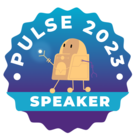Receiving feedback from your customers is crucial for identifying potential risks, uncovering warning signs, and establishing a strong advocacy program. It also serves as an excellent means to enhance your product offerings and improve the overall user experience.

When my customers inquire about the type of survey they should conduct to gather feedback from their customers, the common question arises: NPS or CES? The straightforward response is BOTH. However, it's important to note that these surveys have distinct use cases and should be implemented at different stages of the user journey. Below, you'll find an analysis of the two survey options and the corresponding business scenarios for each.
NPS:
Net Promoter Score (NPS) Survey helps you get the data that you need to analyze customer satisfaction and to predict business growth. NPS is calculated based on asking customers a single question that predicts the probability of both retention and advocacy: “How likely is it that you would recommend this product/company to a friend or colleague?” Respondents rate their answers on a scale from 0 to 10.
Based on the feedback you receive, respondents will be placed into 3 different categories:
- Promoters (rating 9-10): Happy and loyal customers who will keep buying and referring others (psssst… these are your strongest advocates to your brand!)
- Passives (rating 7-8): Satisfied but indifferent customers are not enthusiastic enough about your products or services to actually promote them
- Detractors (rating 0-6): Unhappy customers who may recommend against your company, product, or service (helpful tip: if you get a detractor score, immediately reach out to begin working on the relationship, these users have a high churn rate)
Business use cases for NPS:
- To segment users and priorities
- To identify room for improvements
- To begin building an advocacy program
- Assist in mitigating risks of churn
How often should I use NPS: At Gainsight, we recommend our customer run an NPS of their entire customer base every 6 months.
How to analyze the results: For additional information on how to analyze the results, be sure to check out this article!
Why is it important: NPS can serve as an indicator of future business growth. A high NPS, or even a score surpassing the industry average, signifies a strong connection with customers who are likely to become brand evangelists, spreading positive word-of-mouth and contributing to a cycle of positive growth.
Now, let’s take a look at CES and how you can implement this in your organization moving forward.
CES
Customer Effort Score (CES) Survey helps you measure the ease with which customers use your product or services. A CES survey has a Likert Scale rating of 1-7. A score between 1-3 implies that the user had to put forth High effort while working with your product or service. A score between 4-7 implies that the user had to put forth Low effort while working with your product.
Business Use Cases for CES:
- After a user completes a key action/on-boarding (contact with a core or secondary feature)
- After using a newly-released feature/reaching a milestone
- After customer support or educational sessions
How often should I publish a CES survey?: CES surveys won’t be on a regular cadence like your NPS.These types of surveys will generally be used for particular situations to follow up. For example: New product/feature release, support follow up…
How to analyze the results: The formula for calculating your customer effort score is the sum of all the customer effort scores divided by the total number of survey responses. The result will give you an average amount of effort your customers put in when interacting with your business.
Why is it important: CES helps your business improve the weakest parts of your current customer journey, making the overall customer experience better.
The recurring question remains: Which one is the right choice for me? My resounding answer is always: BOTH!!!!!! I recommend sending out an NPS survey every six months to identify your advocates and identify users who may not be having a satisfactory experience. Additionally, when you have an upcoming release or a new feature and seek feedback, consider sending out a quick CES survey to gather valuable insights.
